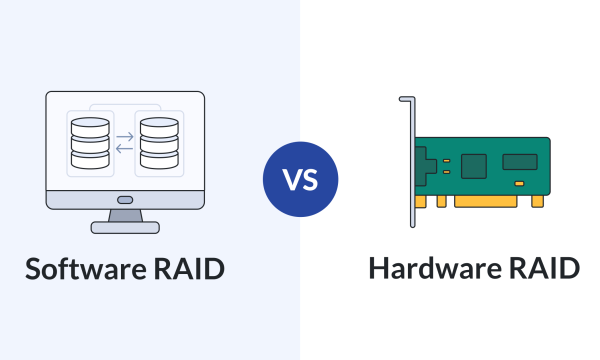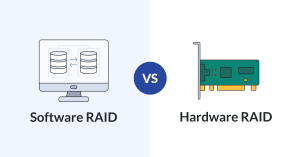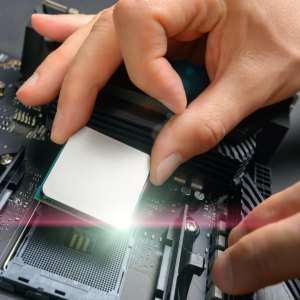
In the realm of data storage and management, RAID (Redundant Array of Independent Disks) is a technology used to combine multiple hard drives into a single unit for improved performance, redundancy, or both. There are two primary types of RAID configurations: software RAID and hardware RAID. Understanding the differences between these two is crucial for IT professionals and businesses looking to optimize their storage solutions. This article delves into the intricacies of software vs hardware RAID, comparing their advantages, disadvantages, and ideal use cases.
What is RAID?

RAID stands for Redundant Array of Independent Disks. It is a method of combining multiple disk drives into a single logical unit to enhance data redundancy, performance, or both. The primary levels of RAID are:
- RAID 0: Stripes data across multiple disks for increased performance but offers no redundancy.
- RAID 1: Mirrors data across multiple disks, providing redundancy but no performance boost.
- RAID 5: Stripes data and parity across multiple disks, offering a balance of performance and redundancy.
- RAID 6: Similar to RAID 5 but with an additional parity block, allowing for higher redundancy.
- RAID 10: Combines RAID 0 and RAID 1, providing both performance and redundancy.
Software RAID vs Hardware RAID

When choosing between software RAID and hardware RAID, it is essential to understand their fundamental differences, benefits, and drawbacks.
Software RAID
Software RAID utilizes the host system’s CPU and memory to manage the RAID array. This approach is typically implemented at the operating system level.
Advantages of Software RAID
- Cost-Effective: Software RAID is generally cheaper because it does not require additional hardware. It leverages existing system resources, making it an attractive option for budget-conscious setups.
- Flexibility: Software RAID is often more flexible in terms of configuration and can be easily managed and modified through the operating system.
- Ease of Maintenance: Since it is software-based, updates and patches can be applied easily without needing to replace physical components.
Disadvantages of Software RAID
- Performance Impact: Software RAID can put a significant load on the CPU, potentially affecting the overall system performance, especially under heavy workloads.
- Limited Features: While software RAID is flexible, it often lacks some advanced features and optimizations found in hardware RAID solutions.
- Dependency on OS: Software RAID is tied to the operating system, which can limit its compatibility across different platforms and environments.
Hardware RAID
Hardware RAID uses a dedicated RAID controller card installed in the server or storage device. This controller manages the RAID array independently of the host system’s CPU.
Advantages of Hardware RAID
- Enhanced Performance: Hardware RAID offloads the RAID processing from the CPU to a dedicated controller, providing better performance, especially in high-demand environments.
- Advanced Features: Hardware RAID controllers often come with advanced features such as battery-backed cache, hot-swappable drives, and dedicated memory for caching.
- OS Independence: Hardware RAID operates independently of the operating system, providing greater compatibility and reliability across different platforms.
Disadvantages of Hardware RAID
- Cost: Hardware RAID solutions can be significantly more expensive due to the need for dedicated RAID controller cards and potential additional components.
- Complexity: Setting up and managing hardware RAID can be more complex and may require specialized knowledge and skills.
- Proprietary Systems: Hardware RAID controllers can be proprietary, leading to potential issues with compatibility and vendor lock-in.
Performance Comparison
When comparing hardware vs software RAID in terms of performance, several factors come into play:
- CPU Load: Software RAID relies on the host CPU, which can lead to higher CPU usage and potential bottlenecks. In contrast, hardware RAID offloads processing to a dedicated controller, freeing up the CPU for other tasks.
- Data Throughput: Hardware RAID generally offers higher data throughput, making it better suited for high-performance applications and environments with heavy read/write operations.
- Latency: Hardware RAID typically has lower latency due to dedicated processing and advanced caching mechanisms.
Use Cases
The choice between software RAID and hardware RAID largely depends on the specific use case and requirements.
Ideal Scenarios for Software RAID
- Small to Medium-Sized Businesses (SMBs): SMBs with limited budgets and less demanding performance needs may find software RAID to be a cost-effective and flexible solution.
- Non-Critical Applications: For applications where data redundancy is important but performance is not critical, software RAID can provide adequate protection without additional hardware costs.
- Test and Development Environments: Software RAID is suitable for test and development environments where cost savings and flexibility are prioritized over performance.
Ideal Scenarios for Hardware RAID
- Enterprise Environments: Large enterprises with high-performance requirements and critical data need the enhanced performance and reliability of hardware RAID.
- Data Centers: Data centers with heavy workloads and the need for high availability benefit from the advanced features and dedicated processing power of hardware RAID.
- High-Performance Applications: Applications requiring high data throughput and low latency, such as databases and virtualization, are best served by hardware RAID solutions.
Conclusion
In the debate of software RAID vs hardware RAID, there is no one-size-fits-all answer. The choice depends on various factors, including budget, performance requirements, scalability, and specific use cases.
Software RAID offers a cost-effective, flexible solution suitable for small to medium-sized businesses and non-critical applications. It leverages existing system resources and provides easy maintenance and configuration.
Hardware RAID, on the other hand, delivers superior performance, advanced features, and greater reliability, making it ideal for enterprise environments, data centers, and high-performance applications. While it comes with a higher cost and complexity, the benefits often outweigh the drawbacks for demanding use cases.
Understanding the distinctions between hardware vs software RAID and evaluating the specific needs of your environment will help you make an informed decision and optimize your storage infrastructure for maximum efficiency and reliability.
If you have any questions for us, you can see more at: https://hardwarepc.xyz/, X


